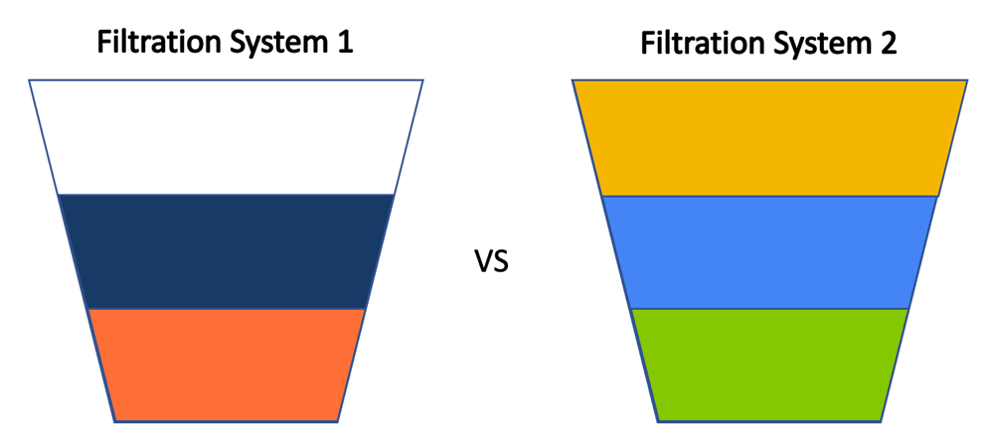Now that the problem is laid out and the available materials and costs are known, you can move on to the next phase of the engineering process: prototyping. To start, we (the clients) would like you to design two “paper prototypes”: one budget version that is cheap, and one that spares no expense. Prototyping is a critical phase in engineering, allowing you to determine what might work and what might not. Paper prototypes let you do this quickly and cheaply, and communicate your designs to others.
Create two different “paper prototypes” for two different filters at a low and high price point. On two pieces of paper, list the materials used, the total cost of the materials, and a sketch of how the materials would fit together to create a filter. On the sketch, indicate where the dirty water enters, and where clean water exits. Finally, write down the pros and cons of each prototype.

Figure 1. Example filtration system sketches (Label your levels based on your design)
If you’re doing this activity with a class, take some time to discuss each team’s paper prototypes. After discussing with the class, you can revise your paper prototypes if you have new ideas. If you are just doing this activity by yourself, you can discuss your paper prototype with a friend or family member, explain to them why you made the decisions you made, and then make revisions.










